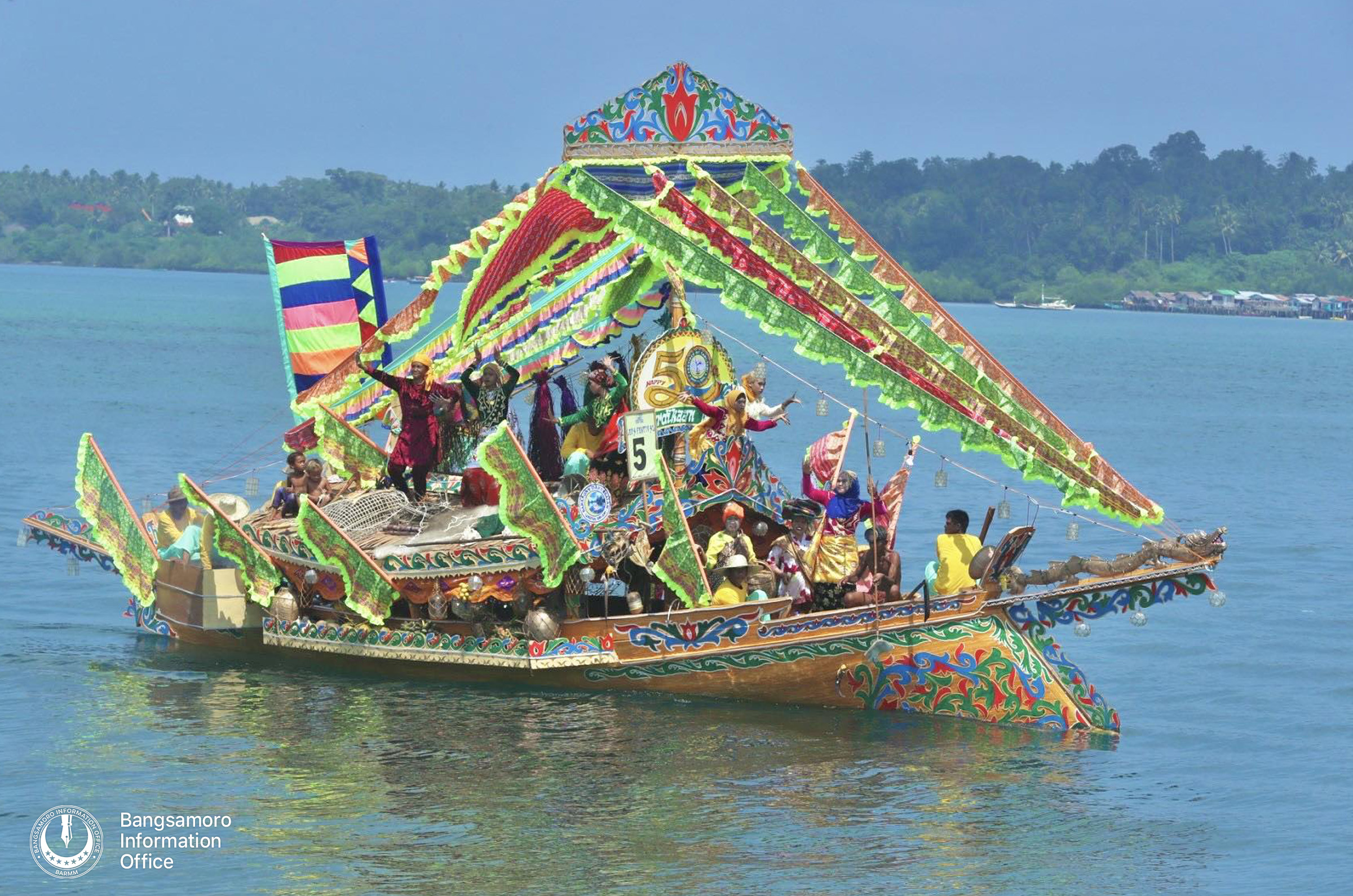Fleets embellished with colorful and vibrant ornaments sailed the sea of Bongao, Tawi-Tawi to celebrate 50th Kamahardikaan sin Tawi-Tawi. (Benyamen Cabuntalan/BIO)
COTABATO CITY—Fleets adorned with colorful and vibrant decorations sailed the sea off Bongao, Tawi-Tawi on Sept. 24, to celebrate its 50th Kamahardikaan founding anniversary.
The provincial government, led by Provincial Governor Yshmael ‘Mang’ Sali, organized the event.
A large number of guests and visitors, including high-ranking officials from the Bangsamoro Autonomous Region in Muslim Mindanao (BARMM), were invited to join and witness this vibrant celebration.
Bangsamoro Chief Minister Ahod Ebrahim personally attended the celebration during the Lepa Festival on Sept. 24.
“I am happy to witness the colorful festival of Lepa here in Tawi-Tawi province, and this would not have been possible if it were not for the well-being of the local government province led by Governor Yshmael ‘Mang’ Sali,” he said.
He emphasized that the celebration symbolizes a deep appreciation for the wealth and culture of Tawi-Tawi.
“Lepa was not only used for transportation and livelihood by our Sama-Dilaut ancestors, but it also served as their traditional home in the middle of the ocean here in the south, a symbol of our colorful history,” he said.
“Lepa” means houseboat, which was the traditional home of the Sama-Delaut (popularly known as Sama-Badjao or Badjao) before they settled into stilt houses along the coastal areas, adapting to the changing world.
Accordingly, it is proudly claimed that no Lepa has ever sunk.
Meanwhile, Kamahardikaan, which means “freedom”, signifies the birth of Tawi-Tawi province, which was separated from Sulu province on Sept. 27, 1973.
Tawi-Tawi province is home to the Sama Tribe, along with various other cultural sub-tribes of Sama. Over time, people from neighboring provinces and settlers from different areas have moved in, intermingled, and married the native inhabitants.
This has led to their increasing influence in local politics, the economy, and control over the province’s abundant natural resources, thanks in part to the natives’ remarkable hospitality and kindness toward newcomers.
While acknowledging the historical background of the province’s creation, which stemmed from the Bangsamoro struggle and sacrifices similar to the formation of the BARMM, the Chief Minister recognized the pivotal roles and efforts of all local government units in developing and consistently providing excellent public services to the people of Tawi-Tawi.
He expressed his gratitude, noting the LGU’s investments for Tawi-Tawi’s development and public services.
Ebrahim thanked them for their ongoing support in their shared cause, emphasizing that this support had contributed to the Bangsamoro Autonomous Region’s increased peace, strength, and prosperity.
“As we celebrate this Lepa festival, let us remember that the success here in Tawi-Tawi is also the success of the Bangsamoro government,” he said.
Chief Minister Ebrahim urged the people of Tawi-Tawi to join the Bangsamoro government in advancing good governance and ensuring that the positive outcomes of peace talks are sustained.
Geographically, the province is located at the southwestern tip of the Philippines, with sea borders shared with Malaysia’s Sabah state and Indonesia’s North Kalimantan province. It’s situated between the Sulu Sea to the north and the Celebes Sea to the south.
The introduction of Islam to the Philippines dates back to the 14th century when Sheikh Karimul Makhdum, a missionary and preacher, arrived in Tawi-Tawi around 1380. He initiated the spread of Islamic teachings among the native inhabitants long before the Portuguese explorer Ferdinand Magellan was born.
In a significant event on Jan. 21, 2019, the people of Tawi-Tawi voted overwhelmingly to become part of the BARMM.
“We should consider Tawi-Tawi now as the front door of the Bangsamoro for economic growth and development through BIMP-EAGA and not to call anymore a back door which connotes something wrong meaning like smuggling area,” he stressed.
The BIMP-EAGA or the Brunei Darussalam, Indonesia, Malaysia, and the Philippines East ASEAN Growth Area was launched in 1994 as an initiative to enhance trade, investments, and tourism through new intra-region shipping routes, air links, and power interconnection projects. (Kasan Usop, Jr./Aisah Abas/BIO)








